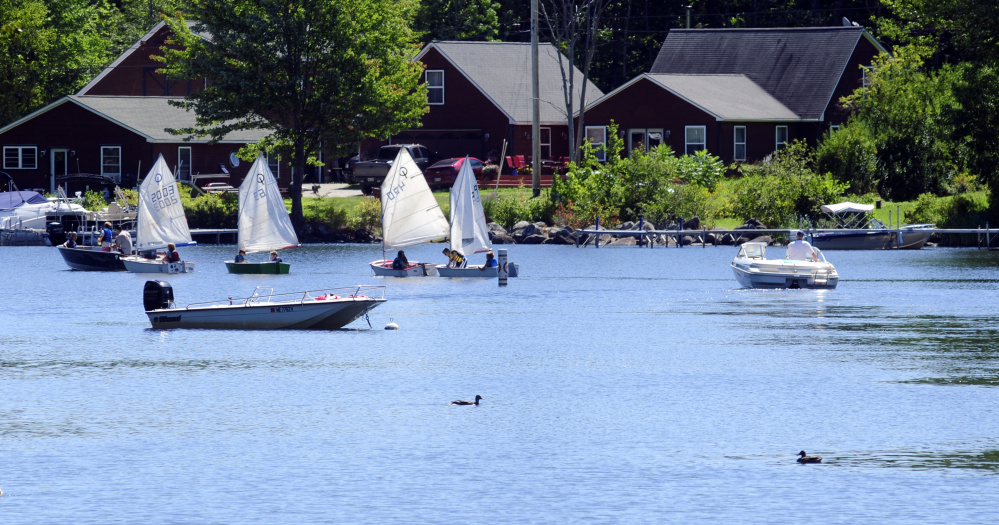The pioneering educator John Dewey taught us, over a half century ago, that students learn by doing. The experiential and problem-based learning he espoused, though controversial during his time, has survived and even thrived over the decades.
Today, similar themes in education revolve around phrases like “hands-on learning,” “inquiry-driven learning,” and “community service.” If schools still believe in these concepts, then conservation work can provide excellent opportunities for real-world problem solving for the environment and our communities.
What’s even more exciting for conservation educators like me is the overlap between conservation and two other current trends: STEM education and the emphasis on soft skills. The overlap with science, technology, engineering, and math is pretty obvious, generally speaking, but the specifics are worthy of attention.
Most science education involves technology today. Identifying invasive plants, both above and under water, requires both book (or internet) knowledge as well as Brownie’s Third Lung, a tech advance that helps divers work underwater without cumbersome air tanks. A special diving mask enables communication between divers and support crew on boats. The Diver Assisted Suction Hose, or DASH, boats that vacuum up hundreds of gallons of invasive milfoil are another tech marvel.
Recreational boaters benefit from “armchair” lake science available via smartphones, but conservationists study written records and test water quality over decades and in real time. We also keep records of wind direction, lake flow, water clarity, water temperature, phosphorous levels and more, all with the help of science and technology.
In the quest to better buffer lakes from pollutants in rain water runoff, math and engineering play key roles. The “environmental engineers” in lake associations might lack formal engineering degrees, but they know the specific skill-set needed to improve and protect water quality. Infiltration trenches, rain gardens and diversion bars steer erosion-laden rain away from lakes and into the naturally occurring filters of the landscape. And all these best management practices require math.
Whether converting a sloping shoreline into more environmentally friendly wood-framed steps filled with gravel (infiltration steps) or figuring how many cubic yards of erosion control mulch are needed, you’d best know your basic length-by-width-by-height math, and more.
That’s the STEM part, though more and more educators are adding an “A” for art, thus making the acronym STEAM. Some of the easiest applications for art are the engaging words written not only to explain conservation science but also to teach the content of the STEM disciplines. More advanced or diverse examples of art at work are the sketches, graphs and drawings created by scientists, naturalists, and engineers. Authors Rachel Carson and Aldo Leopold are avatars of environmental writing.
Recently, employers have found that many A- and B-level students lack the work experience and communication skills that transcend mere grades. Soft skills, the refrain goes, are in short supply. Teamwork, leadership, creative problem-solving, and learning from failure and mistakes can best be learned outside the classroom — in the field, literally.
My employer, Carrabec High in North Anson, sponsors invasive plant patrols on Embden Pond every summer. Less scientific are the litter patrols we’ve organized on Embden’s shores and the Carrabassett River. Our graduation requirement of 40 hours community service lets students think outside the box of the classroom while improving both the community and the environment.
My colleagues in the North Pond Association have partnered with Colby College, Thomas College, and the Somerset Career & Technical Center in Skowhegan. Lake association members are passionate and hard-working, but we would by seriously handicapped without our partners in education who specialize in areas where most of us are novices.
It’s uplifting to work with high school and college students and teachers. STEAM education and soft skills are welcome additions as we work to protect Maine’s land and waters. Thank you, schools and teachers, if you’re already involved. If you are not, please accept this invitation to partner with your local lake association. Nature is a wonderful classroom; just ask your students. Plus, nature needs our help now, more than ever.
Service learning goes far beyond making a college application or resume look good. It makes you feel good, and it makes the environment look even better. Let’s get busy working outside in the brisk autumn air.
And, hey, community colleges, let’s start working on more conservation courses, degrees, and the creation of salaried conservation employment opportunities. Most conservationists I know are volunteers. Let’s invest in education and the environment, full STEAM ahead.
Doug “Woody” Woodsum, former president of North Pond Association, wrote this on behalf of the Lake Trust, which represents the lake organizations of the seven Belgrade Lakes.
Send questions/comments to the editors.



Success. Please wait for the page to reload. If the page does not reload within 5 seconds, please refresh the page.
Enter your email and password to access comments.
Hi, to comment on stories you must . This profile is in addition to your subscription and website login.
Already have a commenting profile? .
Invalid username/password.
Please check your email to confirm and complete your registration.
Only subscribers are eligible to post comments. Please subscribe or login first for digital access. Here’s why.
Use the form below to reset your password. When you've submitted your account email, we will send an email with a reset code.